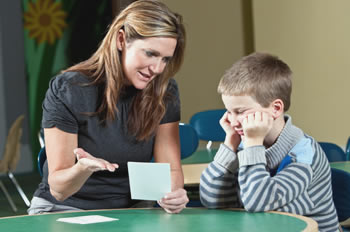 Research continues to confirm that we can teach students with learning disabilities to “learn how to learn.” We can put them into a position to compete and hold their own.
Research continues to confirm that we can teach students with learning disabilities to “learn how to learn.” We can put them into a position to compete and hold their own.
Some intervention practices that produce large outcomes are:
- direct instruction;
- learning strategy instruction; and
- using a sequential, simultaneous structured multi-sensory approach.
Teachers who apply those kinds of intervention:
- break learning into small steps;
- administer probes;
- supply regular, quality feedback;
- use diagrams, graphics and pictures to augment what they say in words;
- provide ample independent, well-designed intensive practice;
- model instructional practices that they want students to follow;
- provide prompts of strategies to use; and
- engage students in process type questions like “How is the strategy working? Where else might you apply it?”
Scaffolding is also something that seems to make a real difference. Start out with the teacher using heavily mediated instruction, known as explicit instruction, then slowly begin to let the students acquire the skill, moving towards the goal of student mediated instruction.
Success for the student with learning disabilities requires a focus on individual achievement, individual progress, and individual learning. This requires specific, directed, individualized, intensive remedial instruction for students who are struggling.
Whether the student is in the general education classroom or learning in a special class setting, focus the activities on assessing individual students to monitor their progress through the curriculum. Concerns for the individual must take precedence over concerns for the group or the curriculum or for the organization and management of the general education classroom content.


